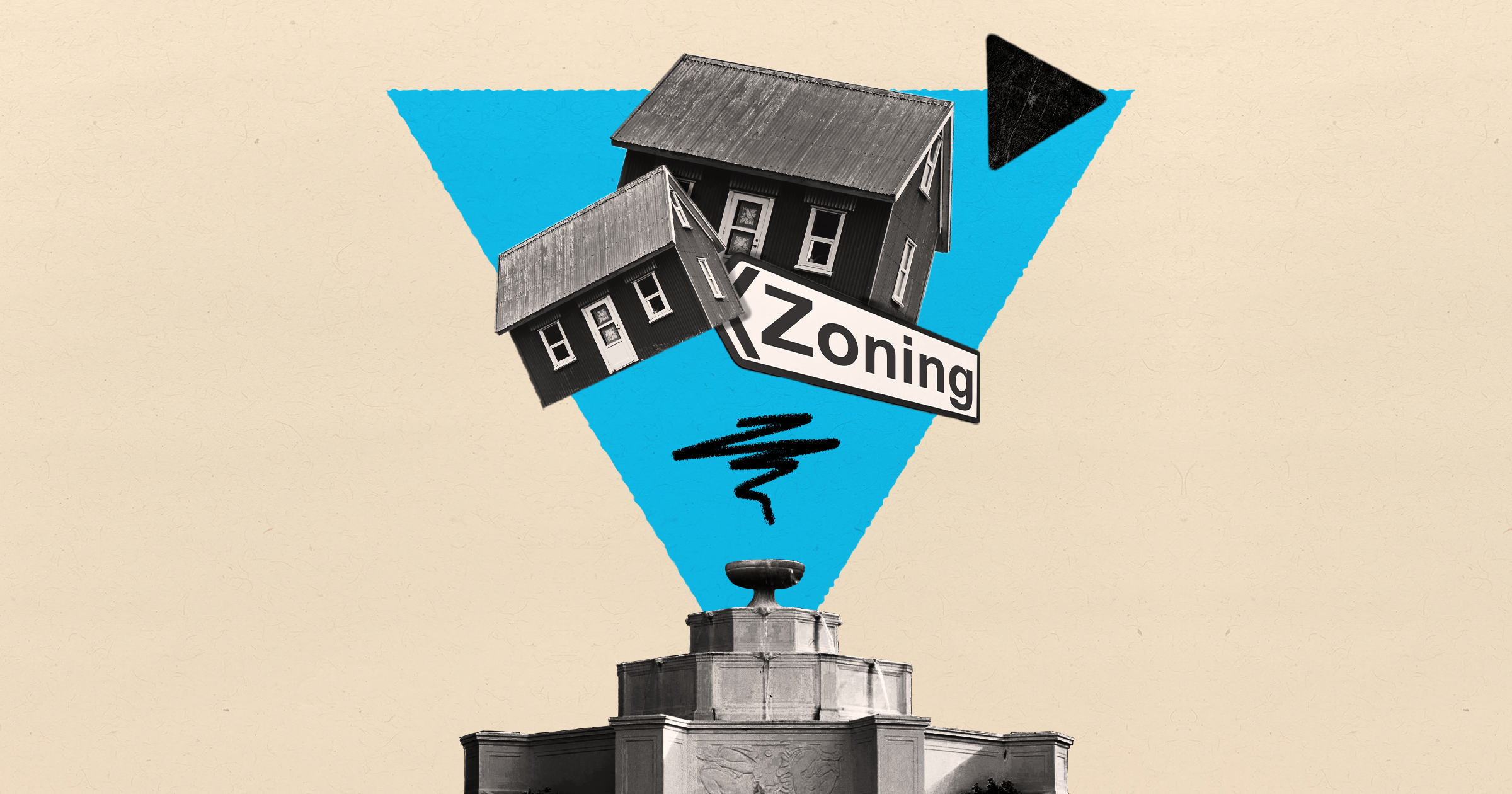Joe DiMento is a renter in San Francisco and a volunteer with SF YIMBY, a grassroots organization that covers the region’s evolving architecture, construction and real estate from a pro-growth perspective.
Just west of Twin Peaks, the San Francisco neighborhood of St. Francis Wood feels like a suburban idyll teleported from the past, with wide, leafy streets, large lawns fronting even larger homes—and even, in perpetually drought-stricken California, intersections boasting fountains. It’s an enclave of real estate excess, tucked away in a city teeming with the unhoused, in a state with a decades-developing housing crisis.
And, using a loophole in a hard-fought state housing law, St. Francis Wood is hoping to stay exclusive and unchanged. A group of homeowners calling themselves the St. Francis Homes Association has filed for historic designation status with the National Register of Historic Places, which would exempt the neighborhood from getting any denser. California Senate Bill 9 (SB 9)—passed last year after multiple similar, and thwarted, attempts in the legislature—allows homeowners to divide single-family lots into two to enable the construction of smaller units, increasing the densification of cities and neighborhoods previously zoned solely for single-family housing.
SB 9 was passed to help alleviate California’s housing crisis, and to make up for the sins of single-family zoning—which, while the aspirational residential experience for millions in the postwar 20th century, was often used to exclude nonwhites from homeownership. (This is the case in St. Francis Wood, which, when it was founded in 1912, explicitly prohibited the inclusion of Black and Asian families.)
Restrictive covenants were explicitly outlawed by the federal government in 1968 under the Fair Housing Act. Still, high housing prices throughout the state—particularly in San Francisco, where the median home price climbed 12% this year to an astonishing $1.58 million—make homeownership unattainable to many families who haven’t been able to amass generational wealth. St. Francis Wood has a median home price of $3.4 million, making it among the most expensive neighborhoods in San Francisco, which is already the second-most expensive major city in the country (behind only New York’s borough of Manhattan).
Since SB 9’s passage, we’ve seen several wealthy, exclusive cities try to circumvent the spirit of the law by throwing up excuses—like Woodside’s mountain lion ploy, or the Palo Alto City Council’s attempt to unilaterally categorize homes as historic rather than allowing homeowners to submit their homes for the designation. These ultra-affluent enclaves are using exemptions in SB 9—written with the very interest of getting the law passed despite the powerful homeowners’ lobby—to negate its impact. (State Sen. Scott Wiener, author of SB 9, tweeted that “Historic districts & homeowners associations shouldn’t be exempt from state housing laws.”)
The St. Francis Wood Homes Association, the group pushing for the designation, is citing the neighborhood’s unique design and landscaping as reason for the attempted designation.
But there’s nothing stopping homeowners or small developers from subdividing lots in the neighborhood and designing the smaller homes with a similar aesthetic to the prevailing one.
Lee Adams III, one of the State Historical Resources Commissioners who voted in favor of the designation, said of St. Francis Wood that “it’s not open to everyone…but neither [are] many parts of the Bay Area, or other parts of California. I’m sorry about our exclusionary past, but St. Francis Wood isn’t the only place that’s had that.”
To translate that comment: Sorry, but the region is expensive and exclusive, so this community can become even more exclusive and expensive by bypassing state law.
This has not gone unnoticed. An overwhelming majority of the public comments at the State Commission hearing decried the designation. Even the Commissioners themselves alluded to the racist history of St. Francis Wood and the housing crisis from which it seeks exemption. But like so much that has contributed to our state’s housing crisis, they didn’t take responsibility for the contribution, and approved the request anyway, which is now on its way to the federal government. Specifically, it’s heading to the desk of Joy Beasley, the National Park Services Director responsible for the historic designation of American landmarks. (Anyone can submit public comment to Beasley through the National Register of Historic Places.)
St. Francis Wood is already exclusive—with 38% of the population density of the rest of San Francisco. If it were allowed to avoid the densification brought about by SB 9, while the remainder of the city began subdividing lots, it would only grow more so. San Francisco has until next year to create a plan for 82,000 new housing units, under the terms of the looming, updated Housing Element, a wonkily named process by which the city has to account for its housing deficit or risk being penalized.
Eighty-two thousand units is a lot of new housing—urgently needed housing, at that. There’s no way for San Francisco to reach its state-mandated goal if neighborhoods like St. Francis Wood are allowed to opt out of their contribution.
In the summer of 2020, Black Lives Matter protesters toppled statues that commemorated our racist past. Why should we now enshrine housing monuments to our racist housing past?
Follow Joe on Twitter at @DiMentor
